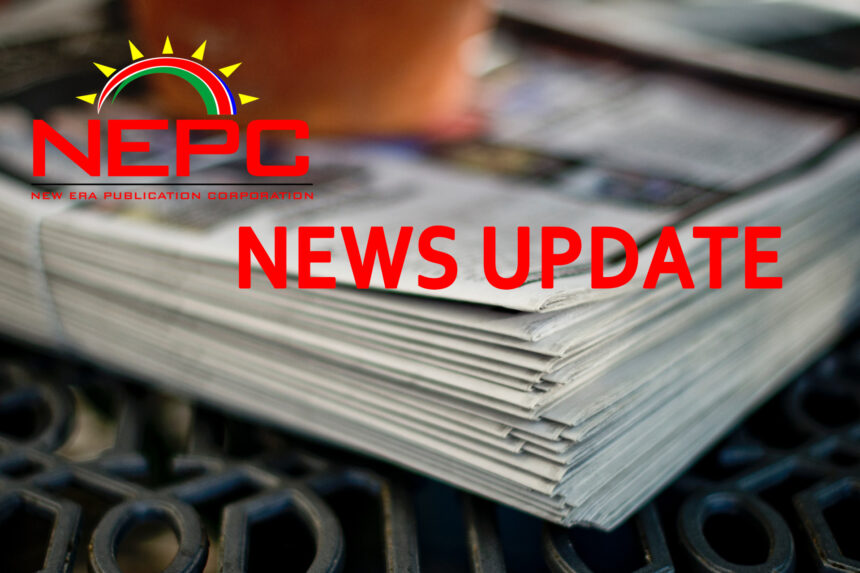Prof. Makala Lilemba
In the early 1960s, there was influence at work not favourable towards the South African government, spearheaded by the political activists yearning for freedom and independence. A South African delegation led by De Wet Nel who visited Caprivi (the current Zambezi region) in 1962 was not well-received, mostly by the political activists. On 19 May 1962, the Senior Information Officer for South West Africa (now Namibia) sent to the Caprivi Commissioner a copy of a letter he had written to Albert Mishake Muyongo in reply to political questions put forward by Muyongo to the South African government about its illegal presence and administration of the region (Kruger 1984). This coincided with the hatching of the Caprivi African National Union (CANU) in 1962, the only political party then which was led by Brendan Kangongolo Simbwae, deputised by Muyongo. Simbwae was arrested as he was about to address the first general political meeting at Mafulo, about two kilometres west of Katima Mulilo. Muyongo later led Caprivians into exile in Zambia. The advent of CANU and its schemes was duly reported to Pretoria, and the response was that the movement was not going to be allowed to have its way. Contrary to this, the party and its followers were not dissuaded from carrying on with the mobilisation process that by the end of the year, it had recorded many followers in the then-Caprivi.
Political apathy in the region: After the arrest of Simbwae and the flight of Muyongo, there was political stagnation in the region, until the surfacing of the PLAN combatants. After their underground campaign at the Singalamwe corridor and the Masida, Makanga and Sibbinda areas, the freedom fighters headed to the Linyanti corridor. The mission to Linyanti was threefold: Kikiya was the home of both Malamo’s mother and Hon Muyongo. The second mission was to deliver a letter to Hon Muyongo’s father-in-law, Puzeli Masole, to allow his daughter to join him in Lusaka. Of course, the third mission was to mobilise the people to accept the merger between SWAPO and CANU. The South African Security Forces got wind of the presence of freedom fighters at a place called Chomboko, near Kikiya, where they were being fed by the residents, and unsuccessfully descended upon the area with helicopters and military cars. The following people were arrested, and most of them sent to Pretoria:
Benjamin Bebi Lifasi was dragged from his house chambers by his own son-in-law, a police officer that time, and taken to the Katima Mulilo Police Station, where he was tortured and died at the hands of the South African Security Forces. His last words were “nibata mezi”, I need water. Moreover, the South African Security Forces ordered the people not to mourn, and went on making jokes about the way he died. He was buried in his cattle kraal in Kikiya village. The irony is that Benjamin Bebi was the father of the self-exiled chief Boniface Bwimo Bebi (Mamili VI), who now lives in Denmark after falling out with the government which his late father supported and died for. The government has, however, honoured veteran Bebi by naming one suburb in Katima Mulilo after him.
The Kanono-Malundu-Shaile villages’ roles in the liberation struggle were also quite clear, as many people who were arrested were CANU cardholders and supporters of the liberation struggle.
Puzeli Masole from Malundu was arrested on suspicion that he had information on the whereabouts of Moses Malamo Manowa, and possibly Mishake Muyongo. During torture, his arm became so swollen that it had to be amputated, and he died being an amputee a few years ago.
Society Limbo was arrested in Malundu village, taken to Pretoria for interrogation on the whereabouts of his daughter, Ellen Musialela, who was in exile that time, and particularly his support for the freedom fighters.
Christopher Masule, a teacher at Kanono Community School then, was arrested for his role in supporting the liberation struggle.
Amon Mwiya Mutonga, the then principal of Kanono Primary School, was also arrested for his role in political activities and his support for the liberation struggle.
Joel Mwilima Matengu’s family of freedom fighters: Late Joel Mwilima Matengu was the father of political activities like former Member of Parliament Geoffrey Mwilima (who is currently serving a long treason prison sentence for secession), Gideon Matengu Mwilima (who passed on recently and a former exilee for many years), and Kenneth Muyongo Mwilima (arrested in 1968 for political activities). The patriarch and leader of the Seventh Day Adventist Church for many years was arrested and taken to Pretoria in connection with the whereabouts of his son Gideon, who had fled the country. Equally ironic is that the same party the patriarch allegedly supported detained his son for many years.
CANU Membership: The following were active members of CANU, and were briefly detained in the Katima Mulilo Prison and later transferred to Pretoria: Watson Taulo Mulife and Davidson Kutiya from Muketela, and Alexander Mutumuswana from Kanono, Sasele Samati from Shaile and Bernard Maungulo Jojo, who was a resident of Linyanti, and has spent many years in prison for secessionist allegations.
1 April 1989 Massacre: Pacified that their liberation mission was accomplished, some combatants (including Bernard Muchite Maini and Cletius Simataa) met their fateful death on 1 April 1989 after being attacked by South African Security Forces.


